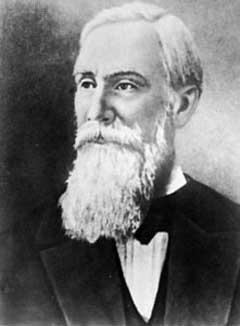\[\bbox[lightcyan,10px,border:3px solid darkblue]
{\begin{align}\min_{\beta}\>&\max_i \> |r_i|\\
&y-X\beta = r\end{align}}\]
As in [1], \(\beta\) are coefficients to estimate and \(X,y\) are data. \(r\) are the residuals.
Some obvious and less obvious formulations are:
- Variable splitting:\[\begin{align}\min\>&z\\& z \ge r^+_i + r^-_i\\&r^+_i - r^-_i =y_i –\sum_j X_{i,j}\beta_j\\&r^+_i, r^-_i\ge 0\end{align}\] With variable splitting we use two non-negative variables \(r^+_i - r^-_i\) to describe a value \(r_i\) that can be positive or negative. We need to make sure that one of them is zero in order for \(r^+_i + r^-_i\) to be equal to the absolute value \(|r_i|\). Here we have an interesting case, as we are only sure of this for the particular index \(i\) that has the largest absolute deviation (i.e. where \(|r_i|=z\)). In cases where \(|r_i|<z\) we actually do not enforce \(r^+_i \cdot r^-_i = 0\). Indeed, when looking at the solution I see lots of cases where \(r^+_i > 0, r^-_i > 0\). Effectively those \(r^+_i, r^-_i\) have no clear physical interpretation. This is very different from the LAD regression formulation [1] where we require all \(r^+_i \cdot r^-_i = 0\).
- Bounding:\[\begin{align}\min\>&z\\ & –z \le y_i –\sum_j X_{i,j}\beta_j \le z\end{align}\]Here \(z\) can be left free or you can make it a non-negative variable (it will be non-negative automatically). Note that there are actually two constraints here: \(–z \le y_i –\sum_j X_{i,j}\beta_j\) and \(y_i –\sum_j X_{i,j}\beta_j \le z\). This model contains the data twice, leading to a large number of nonzero elements in the LP matrix.
- Sparse bounding: This model tries to remedy the disadvantage of the standard bounding model by introducing extra free variables \(d\) and extra equations:\[\begin{align}\min\>&z\\ & –z \le d_i \le z\\& d_i = y_i –\sum_j X_{i,j}\beta_j \end{align}\] Note again that \(–z \le d_i \le z\) is actually two constraints: \(–z \le d_i\) and \(d_i \le z\).
- Dual:\[\begin{align}\max\>&\sum_i y_i(d_i+e_i)\\&\sum_i X_{i,j}(d_i+e_i) = 0 \perp \beta_j\\&\sum_i (d_i-e_i)=1\\&d_i\ge 0, e_i\le 0\end{align}\]The estimates \(\beta\) can be found to be the duals of equation \(X^T(d+e)=0\).
Opposed to the LAD regression example in [1], the bounding formulation is very fast here. The dual formulation remains doing very good.
Historical Note
The use of this minimax principle goes back to Euler (1749) [3,4]. |
| Leonhard Euler (1707-1783) |
 |
| Pafnuty Lvovich Chebyshev (1821-1894) |
References
- Linear Programming and LAD Regression, http://yetanothermathprogrammingconsultant.blogspot.com/2017/11/lp-and-lad-regression.html
- A.Giloni, M.Padberg, Alternative Methods of Linear Regression, Mathematical and Computer Modeling 35 (2002), pp.361-374.
- H.L. Harter, The method of least squares and some alternatives, Technical Report, Aerospace Research Laboratories, 1972.
- L. Euler, Pièce qui a Remporté le Prix de l'Academie Royale des Sciences en 1748, sur les Inegalités de Mouvement de Saturn et de Jupiter. Paris (1749).
No comments:
Post a Comment